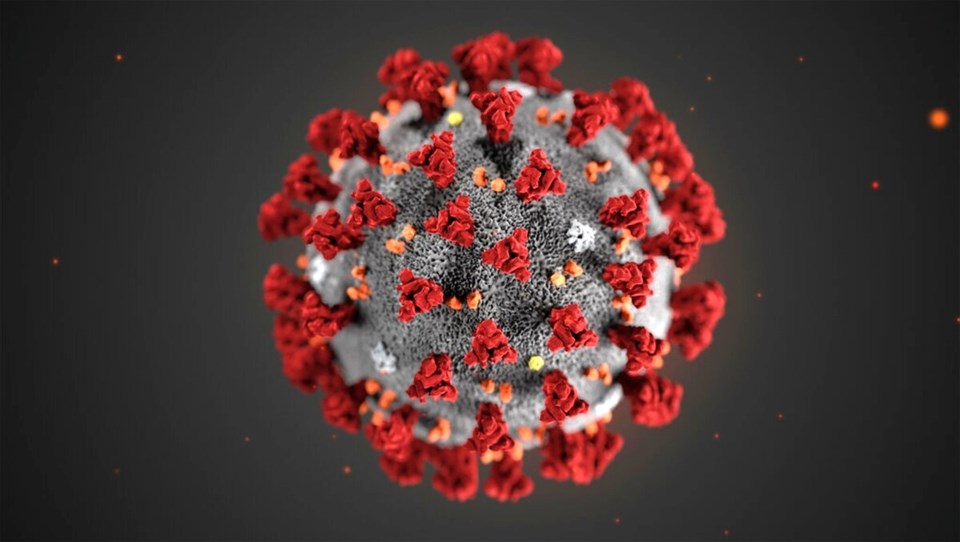Northern Manitoba accounted for about 45 per cent of the 154 new cases of COVID-19 announced by the provincial government Jan. 20.
Seventy new cases were announced in the Northern regional Health Authority, including 32 in the Lynn Lake/Marcel Colomb/South Indian Lake/Leaf Rapids health district, 10 in the Island Lake health district, nine each in the Shamattawa/York factory/Tataskweyak/Split Lake and Grand Rapids/Misipawisitik/Moose Lake/Easterville/Chemawawin health districts, five in the Thompson/Mystery Lake health district, four in the Cross Lake/Pimicikamak health district and two in the Gillam/Fox Lake health district.
Acting deputy chief provincial public health officer Dr. Jazz Atwal said at Wednesday's COVID-19 news conference that 48 of the new northern cases were among First Nations people.
“We definitely have a lot of cases within our northern population in certain areas,” Atwal said.
There are now more than 1,500 active cases in the north, including more than 500 in the Island Lake health district. The Canadian military is sending personnel to Garden Hill First Nation on Thursday to support the running of the emergency operations centre, set up an isolation area and provide ground transportation, Global News reported.
About 73 per cent of active COVID-19 cases were among First Nations people as of Jan. 19 according to the Manitoba First Nations COVID-19 Pandemic Response Co-ordination Team (PRCT), and First Nations people made up 45 per cent of all those hospitalized in the province due to the virus and 52 per cent of those in intensive care. There were 273 people in total in Manitoba hospitals due to the virus on Wednesday, 129 of whom had active cases. Thirty-six people were receiving intensive care as a result of their infections, though 11 of those patients were no longer considered to have active cases. Thirty-two northerners, all but one with active infections, were in hospital as of Wednesday, including nine in intensive care. Atwal said that patients requiring advanced or intensive care are treated in Winnipeg but that some northern hospitals also treat COVID-19 patients.
“There is capacity in the Thompson hospital to manage COVID clients,” Atwal said.
With Pfizer having announced reductions in the number of doses of its COVID-19 vaccine that it can deliver the next few weeks, Manitoba currently has enough of that vaccine to last until Feb. 7, Manitoba Health and Senior Care medical officer of health Dr. Joss Reimer, a member of the province’s COVID-19 vaccine implementation task force, said Wednesday.
“For Thompson we have decided temporarily to use Moderna instead fo Pfizer to ensure that we do get doses to that area particularly in response to the higher numbers we’re seeing in the Northern Regional Health Authority,” she said. “Rather than delaying the opening of that site [scheduled for Feb. 1] with this disruption of Pfizer, we’re now temporarily going to be using Moderna there so that the disruption does not have an impact on the opening of that site. In the long term, assuming that the numbers return to where Pfizer is currently stating they will be returning to, the Thompson site would be using Pfizer simply based on the transportation and storage requirements that make it a better hub for the more complex requirements of Pfizer.”
So far, 895 NRHA residents have received their first doses of COVID-19 vaccine and 13 have received their second doses.
Atwal was asked about the test positivity rate in the north and how it compares to the province as a whole, where the rate is 9.5 per cent, and Winnipeg, where it is under seven per cent. Atwal said public health doesn’t usually provide test positivity rates for the smaller regions because their lower populations can skew the results but the Manitoba First Nations PRCT had data on their website for Jan. 18 showing rates as high as 44 per cent in the Island Lake health district and 36 per cent among Swampy Cree Tribal Council First Nations, which include Marcel Colomb First Nation near Lynn Lake.
The province updated its list of flights and events where possible public exposures to COVID-19 occurred Jan. 17. These potential exposures include flights from Winnipeg to Thompson and Thompson to Gillam on Jan. 7 and a flight from Thompson to Winnipeg on Jan. 11. Other possible exposures occurred on Maple Bus Lines buses travelling from Winnipeg to Thompson Jan. 8-9 and Jan. 11-12 as well as one going from Thompson to Winnipeg Jan. 6-7.
Gillam School reported two possible exposures to COVID-19 since school resumed after the Christmas break, On Jan. 14 and 15. The school moved to remote learning for all students effective Jan. 20 and continuing until Jan. 29. A confirmed case was in West Lynn Heights School in Lynn Lake, which also recently moved to all remote learning, on Jan. 5 when they may have been infectious.
Thompson’s mayor and a councillor took time to encourage people to remain vigilant about COVID-19 at the end of their council meeting on Monday night.
“We need to get this under control,” said Mayor Colleen Smook. “Today there was … 118 cases but almost half of them were here in the north so in comparison the 45 or so that we had here in the north today would be equal to 1,000 to 1,200 cases in Winnipeg.”
Coun. Les Ellsworth said he doubted whether people were only going out for essential reasons based on the packed parking lot near Safeway when he want to pick up a prescription earlier that day.
“People should only be going out for essential things,” he said. “It’s not all essential if you’ve got that much traffic in one given time.”




